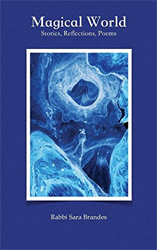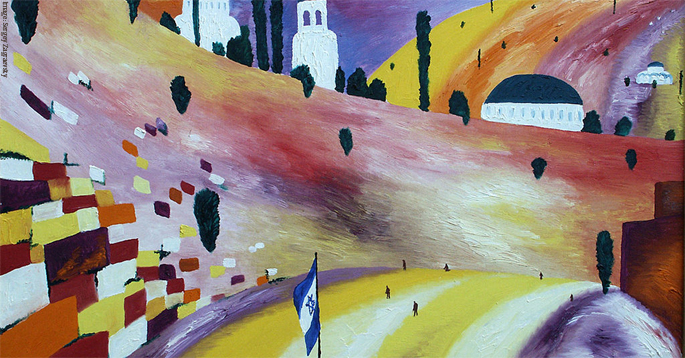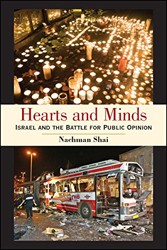Rabbi Sara Brandes is the author of Magical World: Stories, Reflections, Poems. Invited to weigh in on recent developments at the Kotel, the Western Wall of Jerusalem’s Old City, Sara is blogging here all week as part of the Visiting Scribe series on The ProsenPeople.
I love the land of Israel, irrationally — nearly everything about it — but there is only one thing that I like about the Western Wall. When I stand before its looming stones, I can’t help but marvel at the birds that make their nests in the plants that sprout there, twenty feet into the sky. How do they do that? How can green grow from rock? Oh, to be one of those birds, that makes its home in the life that springs forth, in spite of it all!
The Kotel stands in opposition to my Judaism in every other way. It is made of stone, which the Torah specifically forbids worshipping. It was the outer retaining wall of the Temple complex, where God rested between the gaze of two golden cherubs, anticipating Levinas in the most poetic fashion. It is an ultra-Orthodox prayer space, with the added perk of a post office to heaven — neither of which remotely reflect my understanding of the Divine, or how God works in the world.
 Why then should the recent decision by the Israeli government to create a third egalitarian section at the Kotel matter to me at all?
Why then should the recent decision by the Israeli government to create a third egalitarian section at the Kotel matter to me at all?
It shouldn’t, but somehow it does. Whether I like it or not, the Western Wall’s very existence begs the question: What are we going for here, in this project that we call the Modern State of Israel? What is our end game?
The Temple Institute in Jerusalem has an answer. A non-profit organization funded but American and Israeli money, they are dedicated to preparing for the rebuilding of the Third Temple. They have already reconstructed all of the necessary décor — the altar, priestly garments, menorah, etc., (many made of pure gold) — and are training priests to resume animal sacrifice. All that stands in their way is the birth of a red heifer, a cow whose fur is entirely red, and the destruction of Islam’s third-holiest site. The Institute recently announced that a red heifer is indeed being raised now in the United States according to the dictates of the Torah and will soon be sent to Jerusalem. Were they to have their way, Judaism would revert to a patriarchal, sacrificial religion, sanctioning the End of Days and perhaps welcoming a male messiah and a Zombie-like resurrection of some subset of deserving people.
When my bafflement subsides, I have one reaction to the Temple Institute: We are not ready! We, the Jewish world, is not ready for our end game. We have so much more growing yet to do.
Thankfully, the Israeli Chief Rabbinate agrees with me. A sign hangs above the entrance to the Temple Mount announces and warns: “According to Torah Law, entering the Temple Mount area is strictly forbidden due to its sacredness.” According to Jewish law, one must be ritually pure, even of the imprint left by contact with death, in order to walk the ground where the Temple stood. The ritual detergent for such purification is found in the blood and burnt ashes of the red heifer (hence the Temple Institute’s anticipation). We are not ready.
The Western Wall, the Kotel, is the most powerful Jewish symbol in existence today. It links the three most operative dimensions of Jewish identity: history, religion and purpose. It is of our past, from the single moment in Jewish history when our people were one. It has endured until today, through two destructions, 2,000 years of exile, the Holocaust and the founding of the modern State of Israel. It is the screen on which the Jewish story is projected — which is precisely why the Kotel decision matters so much.
Every other nook and cranny of this contested land has the blessing of anonymity, when compared to theWestern Wall, but the Kotel cannot hide. Its power as a symbol demands that it offer us a reflection of the redeemed world if it is going to make any statement at all, and the recent government decision falls short. And so, until the Jewish people succeeds in reconciling the tension between Isaiah’s universalism and Abraham’s particularism, until we are ready to undo the curses levied upon us when we were banished from the Garden of Eden, and until the children of Isaac and Ishmael, Esau and Jacob are ready to gather again to peacefully bury their fathers, better that the Kotel remain an outer retaining wall of a Temple that once was, and that, for now, the lofty birds perched in its heights suffice as our best symbol of hope.
Rabbi Sara Brandes is the author of Magical World: Stories, Reflections, Poems, a spiritual memoir inspired by her life in the north of Israel. She blogs about the complexity of life there at www.herisrael.com.
Related Content:
- Yuval Elizur: Follow the Talmud or Jewish Sharia?
- Elana Maryles Sztokman: 7 Places Where Religious Radicalism Threatens Women’s Well-Being in Israel
- Shulamit Reinharz and Barbara Vinick: Destination Bat Mitzvahs
Rabbi Sara Brandes was born in Los Angeles and received her rabbinical ordination from the Jewish Theological Seminary of America. She worked as an educator, yoga instructor, hospital chaplain, and director of the Neshama Center and Mikvah before moving with her family to Kibbutz Hannaton in Israel.




